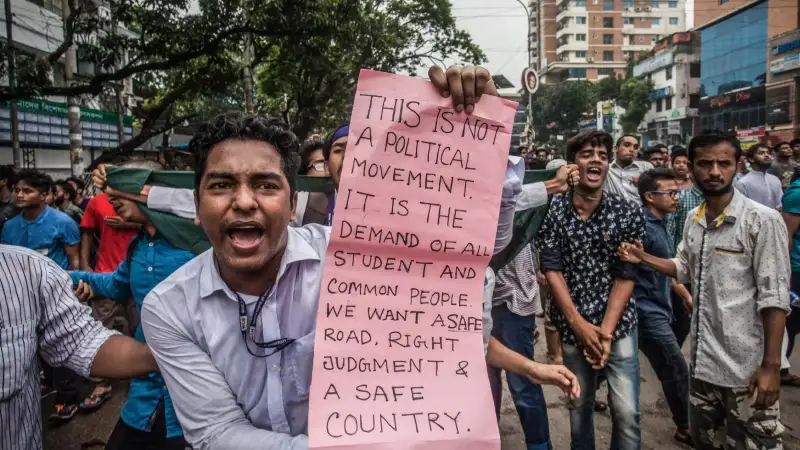Bangladesh Prime Minister Sheikh Hasina on Monday fled the country after students marched to her residence called by Nahid Islam and others turned violent. Nahid Islam and other coordinators of the students' protest had called a march toward Sheikh Hasina's official residence demanding her immediate resignation. On Sunday, a violent clash took place between the students and the students and the party leaders and workers. Hundreds of deaths were registered in the clash. As a result, the Bangladesh Army took the matter into its hands and asked Sheikh Hasina to resign as the PM of the country. After resigning, Sheikh Hasina fled to India in a military chopper. Later, it was confirmed that, "Bangladesh PM Sheikh Hasina has landed at Hindon Air Base in a C-130 transport aircraft. The aircraft will be parked near the Indian Air Force’s C-17 and C-130J Super Hercules aircraft hangars. The aircraft movement was monitored by Indian Air Force and security agencies from its entry into Indian airspace to Hindon airbase in Ghaziabad."
Now, the question arises what was the reason for the Bangladesh Students' Protest?
Bangladesh Students Protest: How it Started?
Bangladesh Students' protest started around calls for changes to the government job quota system. The situation took a severe turn when students set fire to the state broadcaster’s building. The protest was sparked after the country's High Court reinstated a quota system for government jobs. This decision nullified a 2018 policy change that had eliminated the system under Prime Minister Sheikh Hasina's administration. Prolonged demonstrations and rallies in Dhaka and other cities were the result of the widespread discontent among students caused by the reinstatement.
When the quota system was first implemented in 1972 its goal was to guarantee that different groups would be represented in positions within the public sector. This system includes quotas for the families of freedom fighters from the 1971 liberation war, women, residents of underdeveloped districts, indigenous communities, and people with disabilities. When abolished in 2018, the quota system blocked a substantial percentage of government jobs, causing concern among merit-based job seekers.
Although the country's Supreme Court halted the High Court's decision, Sheikh Hasina's government's firm stance on implementing job quotas pushed the students to a breaking point.
How Sheikh Hasina government put a nail in their coffin?
Last month, 6 people leading the protest were held hostage by the Detective Branch for 6 days in the name of keeping them safe. Out of these, Nahid Islam, Asif Mahmud, and Abu Bakar Majumdar were injured and were undergoing treatment in hospitals. Nahid Islam and others mentioned above were forced to make videos to withdraw the movement. When they were in captivity, the Bangladesh Home Minister claimed that they had said to end the movement on their own. When the matter came to light, the anger of the protesters flared up further.
PM Hasina had called an emergency meeting of the Security Council on Sunday. She alleged that the protesters should come to the negotiating table. After the Sunday clashes, Nahid Islam announced that the Dhaka march proposed on Tuesday will now take place on Monday. He said, now the decision will be taken on the streets. Nahid Islam who became the biggest face of the student movement appealed to the protesters to continue their protest in Shahbagh until the government falls. Islam said on Sunday evening that the students are ready to deal with any situation. "We have picked up sticks today. If the sticks do not work then we are ready to take up arms," Nahid was quoted saying.
Is Pakistan's ISI also behind Bangladesh's Students protest?
Pakistan's ISI role has come to the fore if reports are true. The student wing of the banned Jamaat-e-Islami, allegedly backed by Pakistan's ISI, is inciting violence and turning student protests into a political movement in Bangladesh. It is said that Pakistan's army and ISI aim to destabilize Prime Minister Sheikh Hasina’s government and restore the opposition BNP to power through protests and street violence.
Notably, former Foreign Secretary and ex-Ambassador to Bangladesh, Harsh Vardhan Shringla said, "...You can't rule out the involvement of foreign powers who are inimical to Bangladesh's interest and to our security also. You cannot rule out the fact that certain interests have been fishing in troubled waters. But I think the situation itself was a result of several underlying factors, inherent within Bangladesh."
